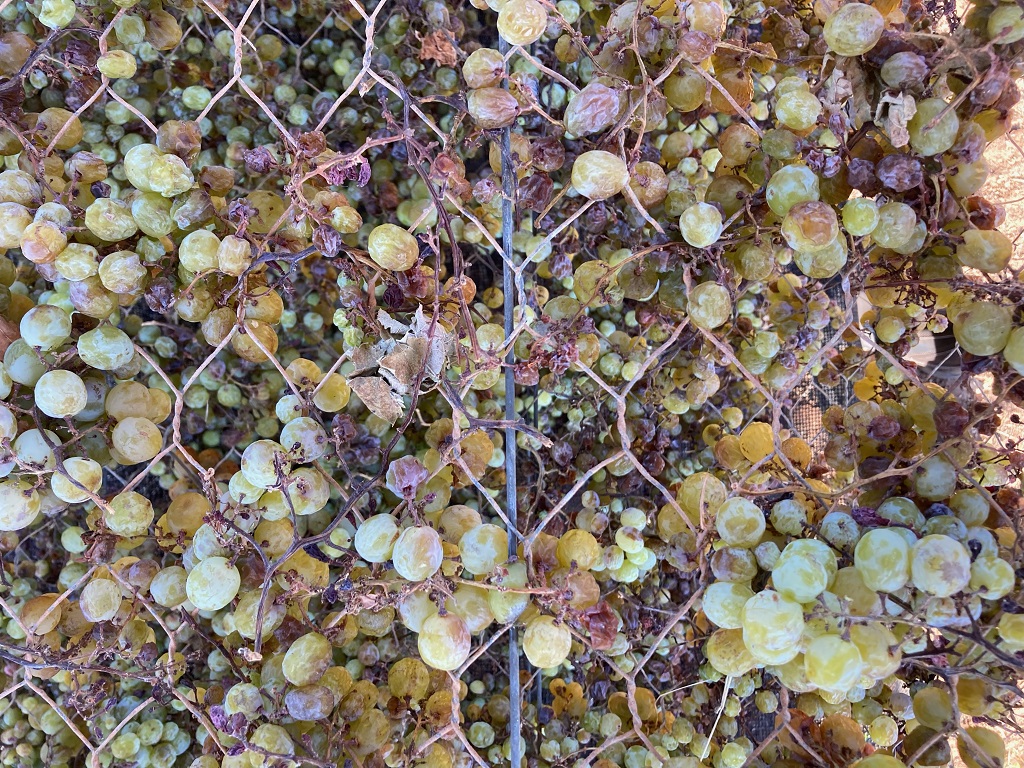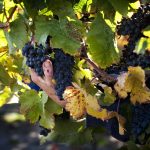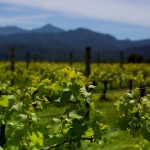Photo Tim Wildman
Passito has roots in ancient traditions in Europe and, like many ancient traditions, is over-ripe for innovation in Australian winemaking. Journalist Harrison Davies looked at producers in Australia who are using new techniques to craft this ancient beverage.
Passito comes from a small island off Sicily, and the practise of making it is among the oldest traditions in the world.
For 2,300 years, producers on the island, Pantelleria, have dried grapes in the dun to the point of having very little moisture in order to hyper-concentrate the sugars before making them into a very sweet dessert wine.
The benefit of making dessert wine this way is that it allows wine producers to make a sweet, fortified style without adding any additional spirits to the wine, giving a lighter, fresher style that is still high in alcohol due to the sugars in the grapes.
The process of making passito can be done in several ways; either by drying the grapes on vine or traditionally on straw mats.
The name passito derives from the Roman drink Passum, named from the Latin verb Pando, which means ‘to spread out’.
The style can be made with any kind of grape, red or white, as the name refers to the style rather than the variety and the wine has historically been made with a wide range of different varieties, typically from warmer climate regions in Italy.
The style has not seen particularly widespread use in Australia, but it does present interesting opportunities for wine producers in Australia’s warm climate regions.
Because it is typically made with these warmer climate Italian winegrape varieties, some producers in Australia are looking at ways to make it in a uniquely down under context.
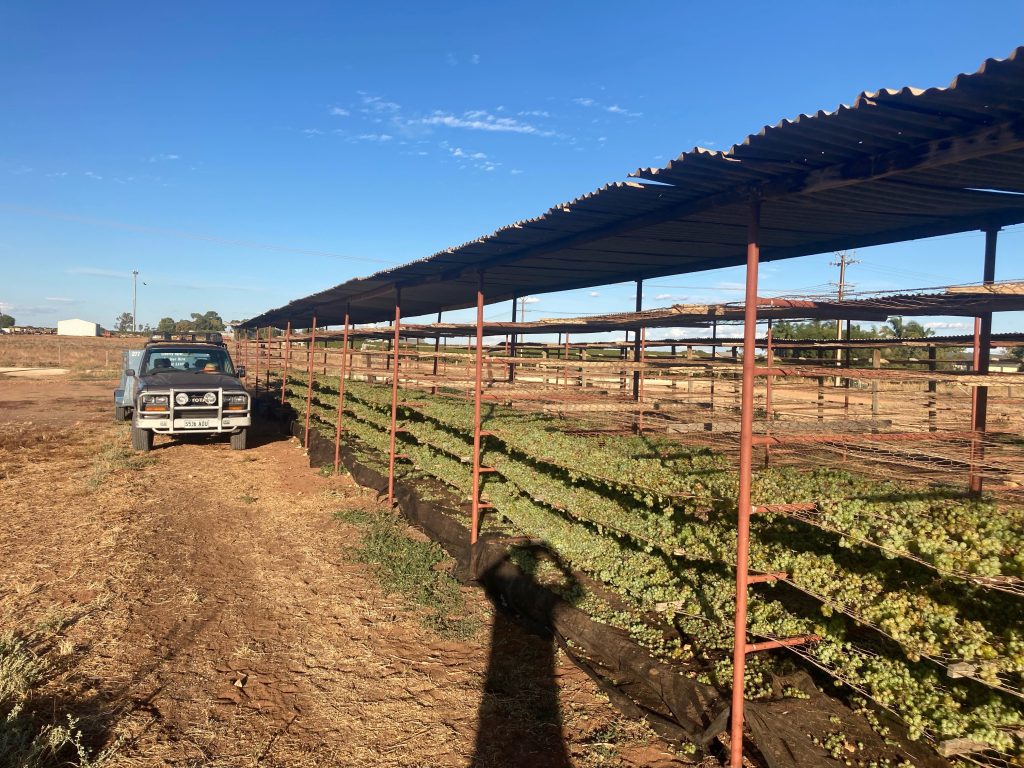
The Wildman
Tim Wildman MW is a sommelier and Pet Nat producer with his own label of creatively names and made wines.
Despite hailing from the UK himself, he earned his stripes as a Master of Wine through his expertise of Australian wine and has become involved with the community in the country.
Wildman sources a lot of his fruit for his pet nats from the Riverland, and on a trip to get some fruit one year, made somewhat of an interesting discovery.
“It goes back to 2016. I had just started making my South Australian pet nat Astro Bunny,” he explained.
“In 2016, I was up in the Riverland, buying some old vine Zibbibo, Muscat of Alexandria, or just Gordo as they call it up there.
“It’s a quite an important component of that wine and makes about 25% and the Riverland is pretty much the only place you can get it in South Australia.
“In the sort of, you know, paddock next to the vineyard that with this old drying rack with sort of trees and bushes growing through it.
“I was standing there and I thought hang on, we’re picking Zibbbo and we’ve got this drying rack, abandoned, and one of Italy’s great sweet wines is passito which is air dried Zibbibo.”
The racks that Wildman is referring to are old sultana drying racks that are scattered throughout the region and harken back to the days of more widespread sultana growing in the region.
They work by placing recently picked grapes on chicken wire racks and then being left in the sun, where the grapes will lose their moisture and the sugars in the fruit will be concentrated.
“The two brain cells bang together, I got an idea,” Wildman said.
“So in that year, 2016, we just experimented. We found a guy who owns a rack, we pulled all the bushes and trees and cleaned up about the first third of it, and we just air dried a half tonne of fruit, just to see how it would go. And it worked!”
Despite traditional passito being dried on straw mats, the process to prepare the grapes for winemaking is still the same, and the drying racks simply make it easier for producers to move the dried grapes from the racks and into buckets.
Wildman said it was exciting work to use the racks for something that they hadn’t been used for before and that they had produced excellent results.
“Most of them are about 50 or 60 years old, they go back to a time when the Riverland had an industry in drying grapes for raisin production, as the locals call them raisin racks,” Wildman said.
“That industry eventually went to other countries where they can do it cheaper like turkey and these racks were just abandoned. My understanding is that the industry pretty much sort of ended in the 1990s, early 2000s
In cooler, damper
regions, the entire
drying process takes
place indoors in huts,
attics or greenhouses
with bunches lying
on racks or hanging
up with good air
circulation.
“There’s about six shelves on them and six shelves high and they can be about 50 metres long. So you got about 15 panels long.
“The end posts are basically railway sleepers in a tree trunk sunk into the ground and to keep them taught, the root balls are concrete blocks the size of small trucks.
“So it’s actually very expensive to take them out and decommission them. So most people just left them.”
Because of affordable land values in the Riverland, many of the racks spent several decades just sitting in the weather and waiting for someone to find a new use for them.
A new use
The way they work is by placing grapes on each shelf and waiting until the grapes have dried and are about to fall off the stalks.
Once the grapes have dries to an appropriate level, the producer can then place tarps under the racks and shake each shelf until the grapes have all fallen off the stalks and onto the tarps below, after which they can simply be pulled out and loaded into buckets.
“The shelves are made of a sort of strong chicken wire material and every metre or so there’s a wooden sort of back on that runs parallel to the rack that goes through the chicken wire.
“The reason for that is that you lay the grapes out just by sort of you know, chucking them from a bucket and then spread them with your hands.
“But when it comes to taking them off, what you do is you pin out these black sheets on the lowest rack before you put anything on the rack, and you’ve just pinned them out using sort of nails in the corner, and then you put the fruit on the rack.
“A certain time later, you have one person standing two people either side of the rack on the four corners of a panel and they take hold of the top rack and start shaking it, lifting it up and down vertically.
“Because the chicken wire was effectively it’s not pinned down, it’s meant to be movable, and you shake the grapes down onto that pillow. And then you get hold of the next rack. And you shake that.
“You effectively shake everything all the way down and it ends up all lying on the black person in the seat at the bottom, you then unpin it and pull it out one side and carry it over to a great bin and slip it in. That is the ingenious method.”
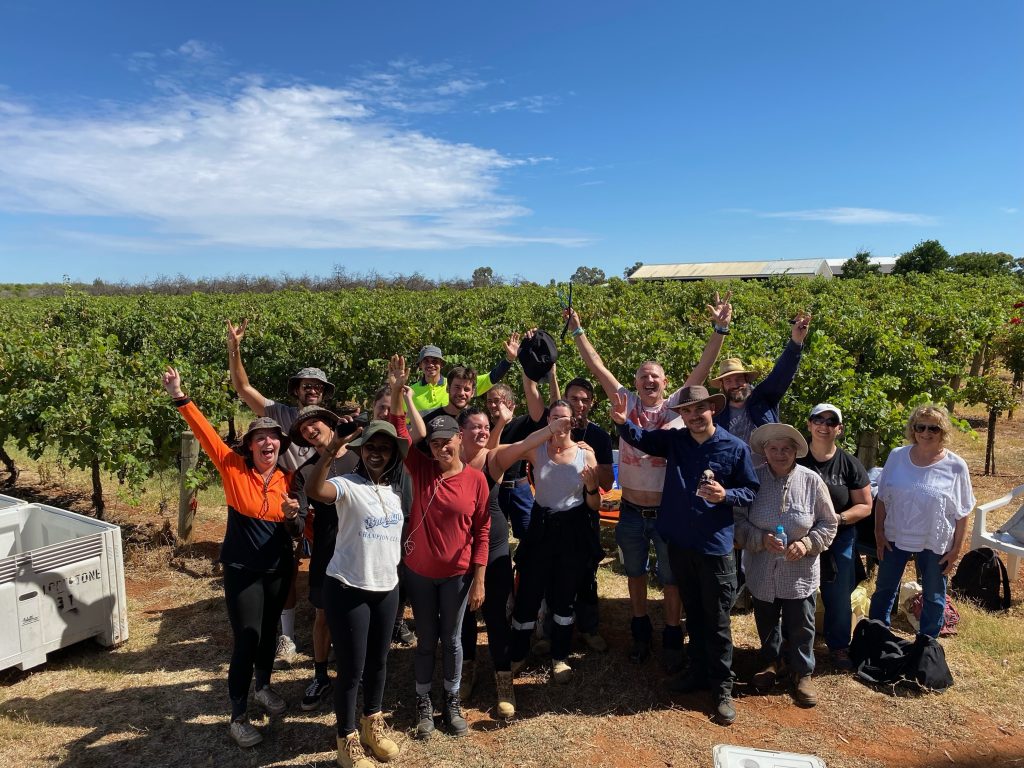
Making the wine
Wildman explained his method for making the passito wine. The grapes lose roughly 90 percent of their water content after sitting on the drying racks for two weeks.
After coming off the racks, the grapes are transported to BK Wines in the Adelaide Hills.
“We get 200 litres of juice from what would normally be 1500 litres. So it’s lost, over 90% of its water content and it’s insanely sweet – over 300 grams per litre of sugar,” Wildman explained.
“We just, squeeze it into a barrel and literally walk away. At that level of sugar it preserves itself, it’s like jam.
“The first couple of years, my friends at Seppeltsfield gave me a little glass file of their finos as the kind of a floor from their fino bowls. We inoculated our procedure barrels with that, but I don’t think it needed it.
“They just very slowly ferment over a number of years and they get drier and obviously alcoholic, but they all seem to be travelling in the same trajectory.
“This was the challenge really, and then I think this is important as Zibbibo is highly aromatic for quite simple as a grape. You know, it’s quite one dimensional. It’s got a big flavour.
“The challenge as a winemaker is to say, well, how can I build in complexity and building complexity through the procedure process?
“They’re the three levers if you like that we’re employing to passito – air drying, oxidative barrel ageing and then finally, because it will kept in unique vintage barrels, eventually when we do put it together, we’ll blend across the year. So fractional blending is the third thing.”
Wildman has not released the passito wine as of yet, but he said he was excited to be producing a multidimensional, sweet wine to represent the Riverland.
Whilst De Bortoli’s The Noble One is a renowned fortified wine from the Riverina, Wildman was unable to find evidence of a similar wine that came from the Riverland.
After speaking with old winemakers from the area, he said he hoped that his wine could be the complex, ageworthy wine of the Riverland.
“I find myself going for cups of tea in Berri and Mildura and meeting these old guys, and they were all guys and they’re sort of 70s and 80s, just to find out if anyone has ever attempted to make a complex, age worthy, fine, expensive, sweet wine in the Riverlands
“My research turned up a blank. Over the years, this fruits had been used as a base for British Sherry, it used to get shipped over to the UK in the 60s and made into Sherry, and it’s been made into Moscato in more recent years.
“If we can achieve I think it’ll be incredibly exciting, mainly because commercially, The Debortoli Noble One is very much a product of a small group of vineyards that they encouraged to be botrytis effective, not really scalable.
“The Riverland is a pretty tough environment to grow grapes in and it’s having a particularly tough time at the moment with the impact of the China tariffs.
“To take a pretty unloved and unwanted grape variety like Zibbibo and then utilise completely unloved and unwanted abandoned drying racks to produce something that is actually high value and premium and almost infinitely scaleable I think is really exciting.”
To view the current issue of the Grapegrower & Winemaker, visit our Current Issue page.
